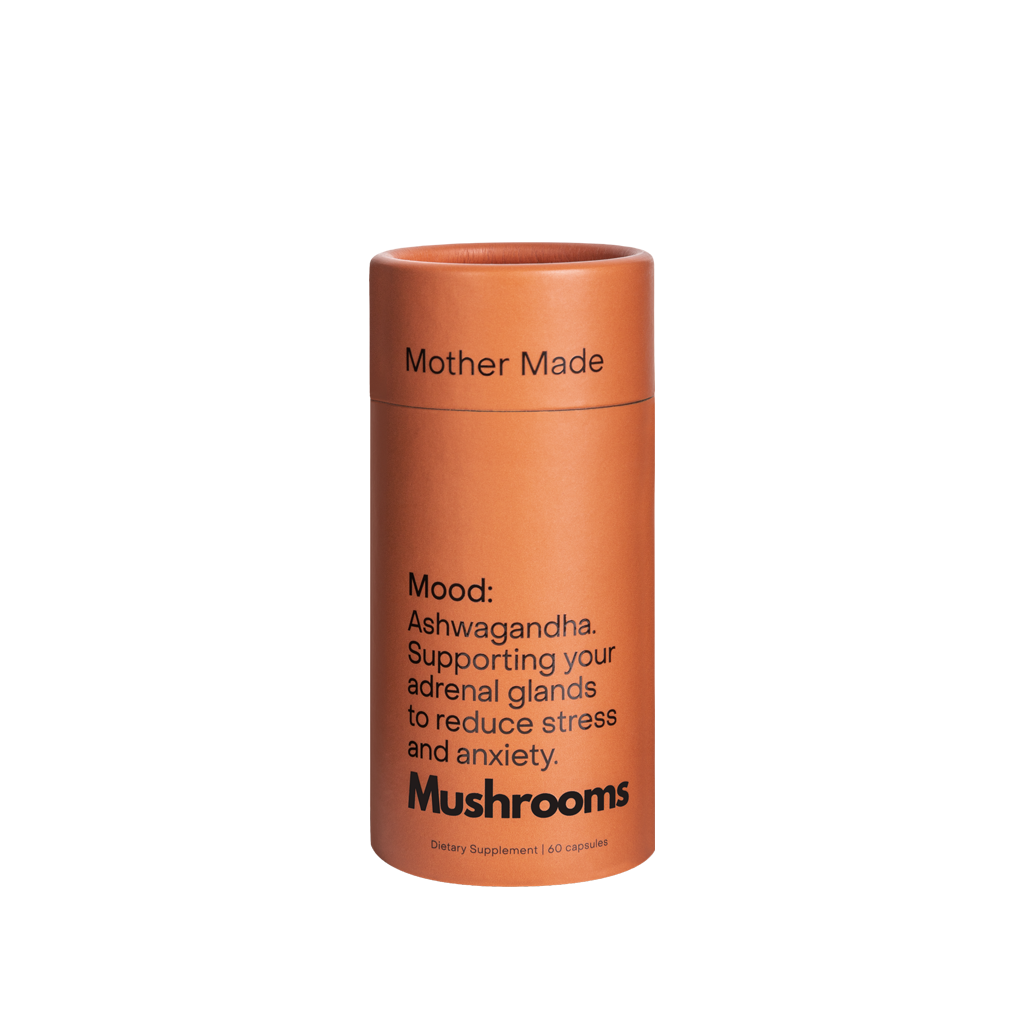You could eat the most nutrient-dense diet, exercise daily and take a cocktail of quality supplements, but when you’re chronically stressed, every organ and system in your body will be affected. This includes your gut, brain, thyroid gland, reproductive organs and cardiovascular system.

Chronic stress, although common, is incredibly debilitating – its negative effects can override all our other efforts to live healthy. It leads to nutrient deficiencies by lowering the production of stomach acid and digestive enzymes. It contributes to dysbiosis – an imbalance in the gut microbial composition – and leaky gut, which is linked to atopic conditions such as eczema and allergies, and autoimmunity. Stress impacts your sleep and energy levels and weakens your immune system, making you more susceptible to infections. And it affects the balance of your hormones, as the body always prioritises survival over reproduction.
And perhaps most alarmingly, chronic stress puts you at higher risk of a number of chronic illnesses, including heart disease, high blood pressure, diabetes, depression, anxiety, autoimmune diseases and hypothyroidism.
Simply put, chronic stress is not a good thing to subject our bodies to. But that doesn’t mean all stress is bad. There are other types of stress that are essential responses within normal and healthy human function. To understand the distinction, it’s important to establish what stress is.
"Stress is about survival. The physiological changes that happen when we experience stress are designed to enable us to react quickly in response to danger in order to find safety."

What exactly is stress?
It begins with the activation of something called the sympathetic-adreno-medullar (SAM) axis, more commonly known as the “fight or flight” response, which occurs following exposure to a stressor. This supports us to either fight the threat or flee the situation. The release of the hormones adrenaline and noradrenaline from the adrenal glands trigger a cascade of changes resulting in an increase in heart rate, blood pressure and cardiac output. More oxygen-rich blood floods into our skeletal muscles, increasing muscle strength and improving our ability to perform strenuous physical activity.
At the same time, stress engages what’s known as the hypothalamic-pituitary-adrenal (HPA) axis – an interweaving of the central nervous system and endocrine systems. This network has extensive effects on our metabolism, behaviour and immunity, and once activated, results in the release of glucocorticoids, such as cortisol, from the adrenal glands. Cortisol mobilises our energy reserves to ensure that we have the resources required to respond to a real or perceived threat.
These functions are part of a normal and healthy human body. They’re a big reason why we’ve survived as a species for so many thousands of years, battling or escaping predators, and they still serve us today whenever we find ourselves in dangerous situations where we need to respond quickly to avoid or mitigate harm.
When does stress become a problem?
Although it’s normal to experience temporary “survival” stress in response to an acute threat, it becomes a problem when the stress and its effect on the body lingers long after the danger has passed. Sadly, in the world we live in today, many of us are experiencing this type of continuous stress – and it’s causing major health issues.
It’s easy to imagine why being in a state of chronic stress with adrenaline constantly pumping round our body might not be the best thing for your mental and physical health.
But there are other, subtle effects chronic stress can have. It can lead to changes in the output of cortisol, also known as HPA axis dysregulation. Initially, cortisol levels become high in response to chronic stress. But longer durations of chronic stress lead to low overall cortisol levels – a state commonly referred to as “burn out”.
Chronic stress also impacts the natural diurnal (daytime) rhythm of cortisol release. Normally, cortisol secretion rises after we wake, peaks after 30 minutes and slowly declines over the remainder of the day. When the HPA axis is dysregulated, cortisol levels may become too low in the morning and too high at night, manifesting in low energy levels after rising and a “second wind” in the evening – right before you’d normally go to bed.
HPA dysregulation also changes the production of hormones, like DHEA and other sex hormones and may impact our neurotransmitters. There are a wide range of symptoms experienced with HPA dysregulation, from menstrual cycle irregularities, ovulation issues, infertility, sleep issues, anxiety, depression, chronic fatigue, blood sugar imbalances, insulin resistance, gut dysbiosis, leaky gut and more.
Identifying your stressors
The big question is: why are we chronically stressed? We’re unlikely to be running from bears or wolves on a daily basis, so what perceived or real threats are stalking us so relentlessly that we are in a perpetual state of fight or flight?
The answer, unfortunately, comes down to how modern societies are geared, and the responsibilities and interactions within them.
Work deadlines, exam stress, relationship conflict – these are some of the most common and obvious stressors that many of us respond to with perpetual surges of adrenaline. But there are many hidden stressors we may not be aware of that are adding to our cumulative burden of stress – otherwise known as allostatic load.
These stressors can be hard to identify, but they are broadly categorised as psychological, physical, psychosocial and psychospiritual.
- Psychological stress are things that impact our emotional or mental wellbeing. Some common causes of psychological stress include grief after the loss of a loved one, living with a chronic illness, financial difficulties and the demands of parenthood. Certain behavioural traits that can make people more prone to psychological stress include perfectionism and being self-critical.
- Physical stress is a category of stress that includes overexercising, undereating, nutritional deficiencies, exposure to toxins and radiation, poor oxygen supply and musculoskeletal misalignments. Athletes and women that regularly practise high intensity exercise often experience physical stress manifesting as menstrual cycle changes like anovulatory cycles (cycles without ovulation) or amenorrhea (loss of period). This is especially true if the energy demands are not compensated by adequate nutrition.
- Psychosocial stress is related to relationship issues, workplace conflict and lacking connection and social support. Psychospiritual stress may be related to lacking purpose and meaning, feeling unfulfilled by your work or living out of integrity with your core beliefs and values.
Identifying the main triggers for your stress is the first step to lowering your allostatic load, as it enables you to reassess your lifestyle and make any necessary adjustments.

Stress management practices
Having a regular stress management practice is one of the most impactful things you can do for your health. But it’s challenging, as many of these self-care practices force us to slow down and simply “be”, which often clashes with our culture of achieving and perpetually doing.
For a practice to work, it’s important that you find one that resonates with you and allows you to attain a sense of presence and calm in the most accessible way possible.
Here are some common but immensely useful practices that can help you do this.

Meditation - By bringing your focus to your breath, the sensations in your body, or the sounds around you, you can take your mind away from the stream of thought that is often the source of so much of our worry and stress.
Yoga - A form of movement meditation, yoga allows us to tune into physical sensations and bring our minds away from problematic streams of thought.
Prayer - Having a faith-based or spiritual ritual such as prayer, can help you establish a sense of safety, allowing you to see that, no matter what the stressor, you are in some way protected and taken care of.
Immerse yourself in nature - The healing power of nature has been revered for as long as humans have been experiencing worry. A simple bush walk, a swim in the sea, a stroll along the beach – these activities all have the ability to bring calm by showing us that we are, in different ways, crucial parts of the boundless and ever-changing system of nature.
Whichever practice you choose, the objective is the same: reach a state of mind where you can recognise that your stressor is not the life-or-death threat that you often perceive it as – and that you don’t need to fight or fly away from it.






